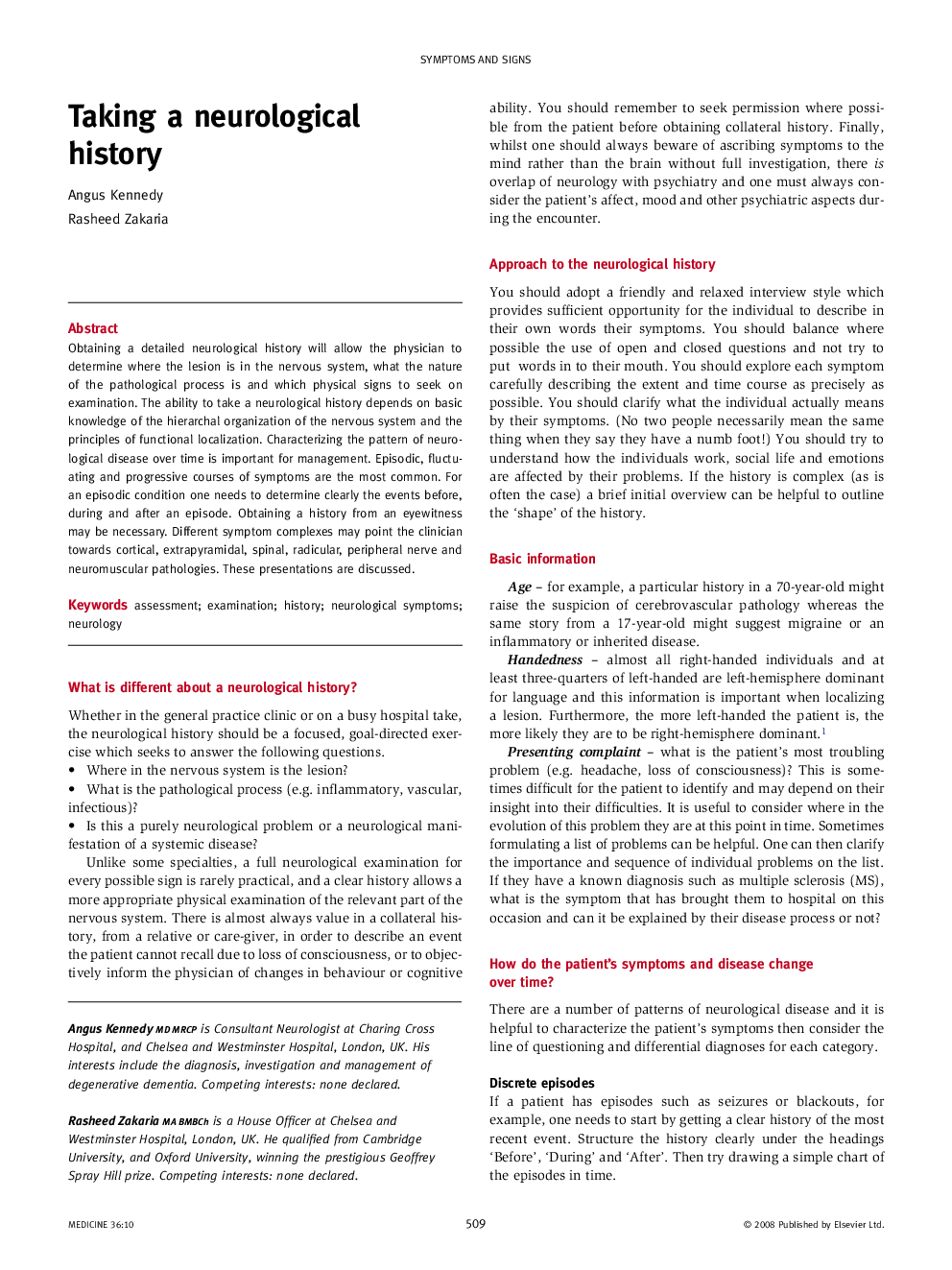| Article ID | Journal | Published Year | Pages | File Type |
|---|---|---|---|---|
| 3805142 | Medicine | 2008 | 6 Pages |
Obtaining a detailed neurological history will allow the physician to determine where the lesion is in the nervous system, what the nature of the pathological process is and which physical signs to seek on examination. The ability to take a neurological history depends on basic knowledge of the hierarchal organization of the nervous system and the principles of functional localization. Characterizing the pattern of neurological disease over time is important for management. Episodic, fluctuating and progressive courses of symptoms are the most common. For an episodic condition one needs to determine clearly the events before, during and after an episode. Obtaining a history from an eyewitness may be necessary. Different symptom complexes may point the clinician towards cortical, extrapyramidal, spinal, radicular, peripheral nerve and neuromuscular pathologies. These presentations are discussed.
